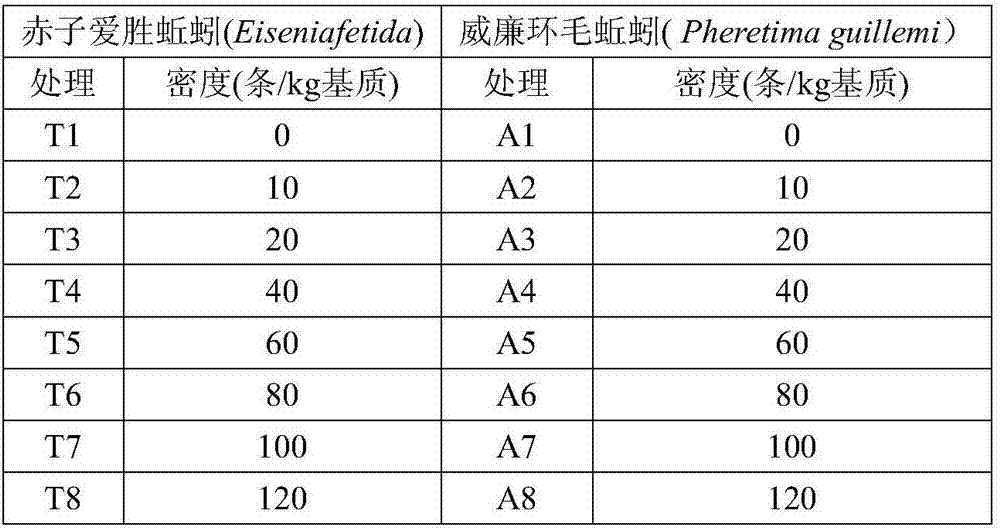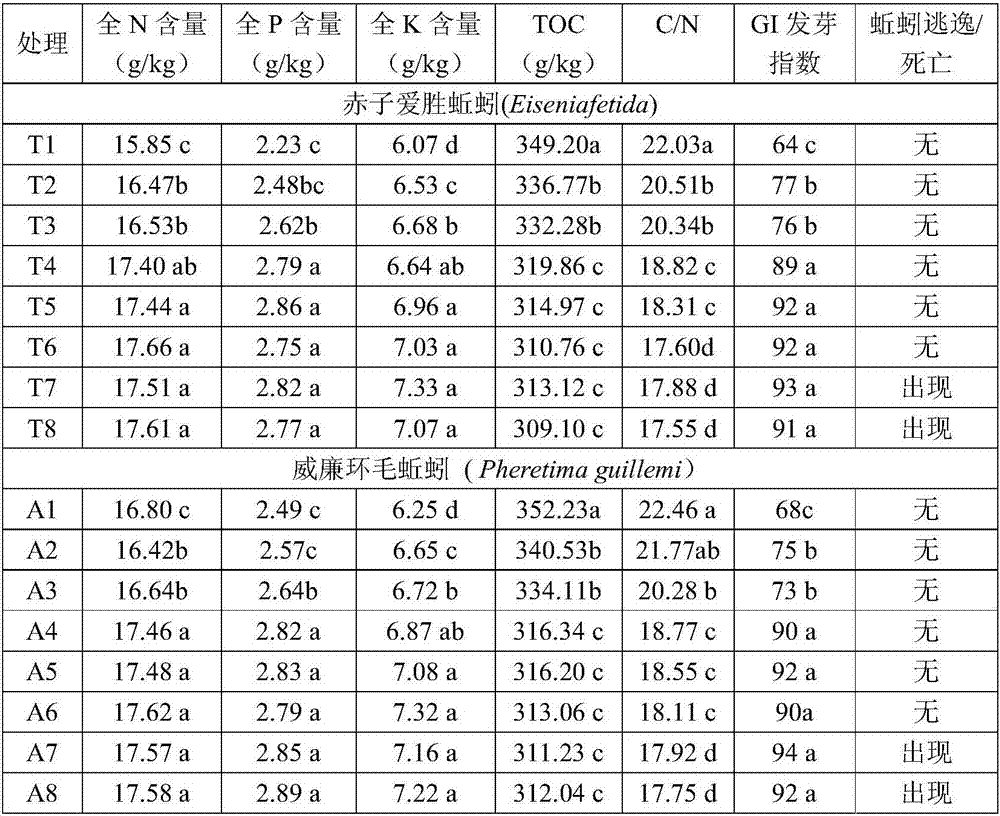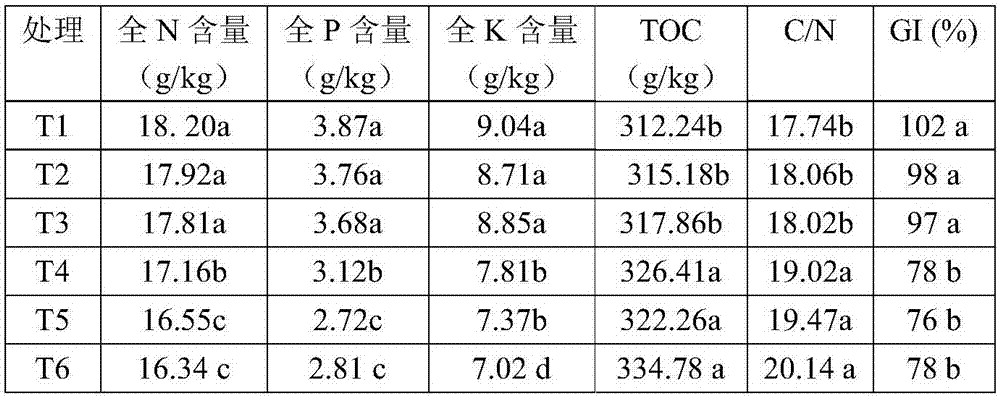Method for treating garden wastes by utilizing earthworms and prepared culture substrate
A technology of garden waste and a treatment method, which is applied in the field of using vermicomposting to treat garden waste
- Summary
- Abstract
- Description
- Claims
- Application Information
AI Technical Summary
Problems solved by technology
Method used
Image
Examples
Embodiment 1
[0094] Embodiment 1: earthworm species and addition density screening of garden waste composting
[0095] Earthworms can devour garden wastes containing a large amount of lignocellulosic substances and transform them into humus-like substances, that is, vermicompost, that is, nutrients such as N, P, and K in organic wastes can be transformed into nutrients that are easier for plants to absorb and utilize. form. The maturity index of the composting treatment of garden waste assisted by earthworms is better than that of conventional composting treatment, and can reach the maturity degree in advance, shortening the composting cycle
[0096] 1. Waste pretreatment
[0097] Use a pulverizer to pulverize the garden waste to 0.5cm particles, and place 40kg (dry weight) of pulverized materials for each composting process into a plastic reaction container with an upper opening (length x width x height, 0.6m x 0.8m x 0.65m , the bottom has 20 holes with a diameter of 1 cm for drainage)...
Embodiment 2
[0109] Example 2: waste particle size screening of garden waste vermicomposting
[0110] 1. Waste pretreatment
[0111] Use a pulverizer to crush the garden waste into particles with a particle size of 0.2, 0.5, 0.8, 1, 1.5, and 2.0, as shown in Table 3;
[0112] Table 3 Treatment of different particle sizes of garden waste vermicomposting
[0113] deal with Material particle size deal with Material particle size T1 0.2cm T4 1.0cm T2 0.5cm T5 1.5cm T3 0.8cm T6 2.0cm
[0114] Use a pulverizer to pulverize the garden waste to 0.5cm particles, and place 40kg (dry weight) of pulverized materials for each composting process into a plastic reaction container with an upper opening (length x width x height, 0.6m x 0.8m x 0.65m , the bottom has 20 holes with a diameter of 1 cm for drainage), after adding urea to adjust the C / N of the waste to 25:1, add water to adjust the humidity of the compost material to 65-70%.
[0115] 2. Aerobic compo...
Embodiment 3
[0123] Example 3: Screening of garden waste vermicomposting methods
[0124] 1. Waste pretreatment
[0125] Use a pulverizer to pulverize the garden waste to 0.5cm particles, and place 40kg (dry weight) of pulverized materials for each composting process into a plastic reaction container with an upper opening (length x width x height, 0.6m x 0.8m x 0.65m , the bottom has 20 holes with a diameter of 1 cm for drainage), after adding urea to adjust the C / N of the waste to 25:1, add water to adjust the humidity of the compost material to 65-70%.
[0126] 2. Aerobic composting
[0127] Carry out aerobic composting according to the 6 different composting methods in Table 5, and each treatment is repeated 3 times, that is, 18 parts of 40kg (dry weight) pulverized waste are respectively placed in the plastic reaction container with the upper opening, and urea is added to adjust the composting time. After the C / N of the waste reaches 25:1, add water to adjust the humidity of the comp...
PUM
| Property | Measurement | Unit |
|---|---|---|
| Particle size | aaaaa | aaaaa |
| Germination index | aaaaa | aaaaa |
Abstract
Description
Claims
Application Information
 Login to View More
Login to View More - R&D
- Intellectual Property
- Life Sciences
- Materials
- Tech Scout
- Unparalleled Data Quality
- Higher Quality Content
- 60% Fewer Hallucinations
Browse by: Latest US Patents, China's latest patents, Technical Efficacy Thesaurus, Application Domain, Technology Topic, Popular Technical Reports.
© 2025 PatSnap. All rights reserved.Legal|Privacy policy|Modern Slavery Act Transparency Statement|Sitemap|About US| Contact US: help@patsnap.com



